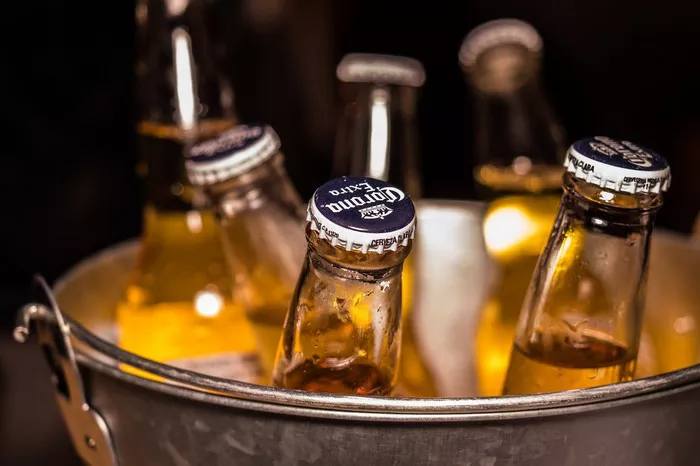Dealcoholized beer, often referred to as non-alcoholic or alcohol-free beer, is gaining popularity as a beverage of choice for those seeking the taste and experience of beer without the effects of alcohol. The production of dealcoholized beer involves a meticulous process that retains the flavors and characteristics of traditional beer while reducing its alcohol content to less than 0.5% alcohol by volume (ABV). In this comprehensive guide, we will delve into the world of dealcoholized beer, exploring the techniques and methods used to craft this unique and satisfying libation.
The Origins of Dealcoholized Beer
The concept of dealcoholized beer is not new and can be traced back to the temperance movement in the late 19th and early 20th centuries when there was a growing demand for non-alcoholic alternatives to alcoholic beverages. In response to this demand, brewers began developing methods to remove or reduce the alcohol content in beer while preserving its taste and aroma.
The development of dealcoholized beer gained momentum in the 20th century with advancements in brewing technology and the need to cater to consumers who wanted a non-alcoholic option. Today, it has evolved into a diverse category with various methods and techniques to produce alcohol-free beer while maintaining the quality and character of traditional beer.
The Essence of Dealcoholized Beer
Dealcoholized beer is designed to offer the flavors, aroma, and overall experience of traditional beer without the alcohol content. The essence of dealcoholized beer can be attributed to several key factors:
Ingredients: Dealcoholized beer is typically made from the same core ingredients as traditional beer, including water, malted barley, hops, and yeast. These ingredients contribute to the beer’s overall flavor profile.
Brewing Process: The brewing process for dealcoholized beer closely mirrors that of traditional beer. It involves mashing, boiling, fermentation, and conditioning. This process allows the beer to develop its characteristic flavors and aroma.
Alcohol Removal: The critical difference in the production of dealcoholized beer lies in the alcohol removal step. Various methods are used to extract or reduce the alcohol content while preserving the beer’s taste.
Flavor Retention: Maintaining the beer’s flavor is a primary concern when producing dealcoholized beer. Modern techniques are designed to retain the beer’s original flavor while minimizing the loss of volatile compounds during alcohol removal.
The Dealcoholization Process
The process of dealcoholizing beer is a meticulous endeavor that involves reducing the alcohol content to less than 0.5% ABV while retaining the flavors and aroma of the beer. Several methods are used to achieve this, with each method having its unique advantages and challenges. Here are some of the primary methods of dealcoholization:
Vacuum Distillation: Vacuum distillation is a method where the beer is placed in a vacuum chamber, reducing the pressure. This lower pressure lowers the boiling point of alcohol, allowing it to be separated from the beer at a lower temperature. The beer is heated gently, and the alcohol is vaporized and collected separately. This method is known for preserving the beer’s volatile compounds, resulting in better flavor retention.
Heat Evaporation: Heat evaporation involves heating the beer to evaporate the alcohol. As alcohol has a lower boiling point than water, it vaporizes first. The vaporized alcohol is then condensed and collected, leaving behind alcohol-free beer. This method is efficient but can lead to some flavor loss due to the higher temperatures involved.
Membrane Filtration: Membrane filtration is a gentle process where the beer is passed through a membrane that selectively separates alcohol from water. This method is known for its ability to retain the beer’s flavors and aroma effectively. It operates at lower temperatures, minimizing flavor loss.
Reverse Osmosis: Reverse osmosis is a process that utilizes a semi-permeable membrane to separate alcohol from the beer. The beer is pressurized and pushed through the membrane, with alcohol passing through while other components are retained. The alcohol is then collected and the remaining liquid is further processed to reblend the beer’s desirable compounds. Reverse osmosis is known for its ability to preserve flavor and aroma.
Spinning Cone Column: The spinning cone column method involves spinning cones that evaporate alcohol at low temperatures, ensuring minimal flavor loss. The cones allow for the separation of alcohol and other volatile compounds from the beer, which are then recombined to retain flavor.
Quality Control and Flavor Adjustment
Throughout the dealcoholization process, quality control is a critical aspect of ensuring that the final product meets the desired quality standards. Flavor retention and adjustment play a pivotal role in delivering a deal-alcoholized beer that closely resembles its alcoholic counterpart. Here are some key considerations:
Sensory Analysis: Trained tasters and sensory panels are often used to evaluate the flavor, aroma, and overall sensory characteristics of dealcoholized beer. This analysis helps ensure that the final product matches the desired flavor profile.
Reblending: Some methods of dealcoholization can lead to the loss of certain volatile compounds that contribute to the beer’s aroma and flavor. To address this, brewers often reblend the dealcoholized beer with a small portion of the original beer to restore any lost flavors.
Balancing Sweetness: The removal of alcohol can result in a slightly sweeter taste due to the residual malt sugars. To balance the sweetness, some brewers may adjust the beer’s recipe or use hop bitterness to achieve the desired flavor profile.
Adjusting Carbonation: Dealcoholized beer is typically carbonated to provide the effervescence associated with beer. Brewers may adjust the level of carbonation to match the style and preferences of the beer.
Conclusion
Dealcoholized beer is a testament to the innovation and commitment of brewers in catering to a diverse range of consumer preferences. Crafted with the same core ingredients and traditional brewing methods, dealcoholized beer offers the flavors and aroma of beer without the presence of alcohol.


